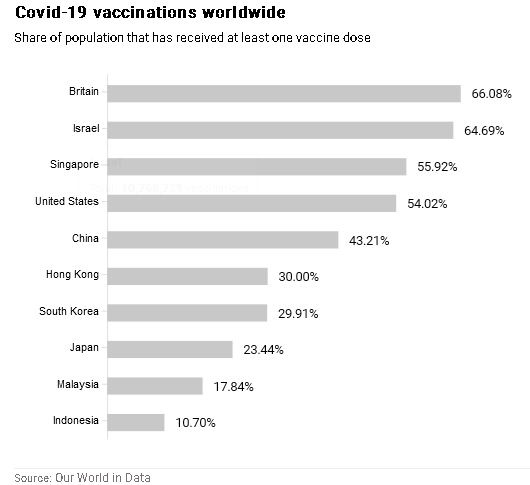Hong Kong is an international city, yet highly dependent on the flow of goods and people from the mainland. We face a huge challenge: how to open up to international travel, while maintaining zero infections so our border with the mainland can reopen.
To open or not to open borders? This is the conundrum facing policymakers around the world. What is the right equilibrium point at which to balance economic and public health? At some point, all countries have to open their borders to survive economically.
At one end of the spectrum are the United States and the European Union, which have opened their borders to travellers and lifted most coronavirus restrictions. With the expectation of a boom in the economy from pent-up demand, the airline, hospitality, food and drink, and retail industries are itching to rebuild and re-emerge from the pandemic.
At the other end of the spectrum are mainland China, Hong Kong and Australia, which have taken a zero-tolerance approach to Covid-19. This has meant our borders have largely been closed to non-residents and we have enforced long quarantines and strict measures.
Globally, experts agree that vaccination is the best defence against the virus, providing a pathway for countries to open up while protecting populations against imported cases. Canada has adopted this strategy.
Prime Minister Justin Trudeau has declared that Canada’s borders will remain largely shut to the US and the rest of the world until 75 per cent of Canadians receive their first dose of the Covid-19 vaccine. So far, 68 per cent of Canadians have done so.

China too is racing to vaccinate 70 per cent of its entire population before the end of the year to achieve herd immunity. China has already vaccinated 43 per cent of its population and administered over 1 billion doses. With the Winter Olympics coming up in February 2022, and herd immunity within reach, China is looking to reopen its borders.
Closer to home, what is Hong Kong’s road map for reopening borders? Our situation is a bit more complicated. On the one hand, our economy is highly dependent on the flow of goods and people from the mainland, which requires “zero infections” before reopening its border to us for quarantine-free travel.
On the other hand, we are an externally oriented economy and international financial centre which needs open borders with easy international travel (and the inevitable consequence of imported cases). We find ourselves in a Catch-22.
Mainland China has long been Hong Kong’s largest supplier of goods. It has been our largest trading partner since 1985, comprising 52 per cent of our global trade. Pre-Covid-19, around 300,000 people – including 27,000 students– were commuting back and forth daily between Hong Kong and the mainland.
Post-Covid-19, stringent quarantines on both sides have virtually stopped the flow of cross-border traffic for almost 18 months. This has led to lost livelihoods, affected students’ education, and separated families.
I have spoken to multiple businesspeople who have recently moved their executives out of their Hong Kong offices to the mainland, because of the inability to travel freely between the two places. This trend is not good for Hong Kong.
We face an immense challenge: how we open up borders to international travel, while maintaining zero locally transmitted infections so our border with the mainland can reopen.
Hong Kong has been deploying long hotel quarantines as a tool to prevent inbound carriers from spreading the virus to the community – but this is unsustainable in the long run.
A partial reopening strategy has started to emerge. Since June 30, Hong Kong has been implementing a seven-day quarantine for travellers who are vaccinated, test negative for the coronavirus and positive for coronavirus antibodies. This measure provides welcome relief to business and leisure travellers.
However, the clearest path to pre-pandemic normality still remains vaccination and achieving herd immunity. Hong Kong has a long way to go on this front, as only 22 per cent of our population is fully vaccinated, with 33 per cent having received one dose.
The highly contagious Delta strain is posing a threat globally and knocking at our door. A Cleveland Clinic study showed that 99.7 per cent of hospital admissions for the coronavirus occurred among those who were unvaccinated or had had only one jab. Will this and the Delta variant motivate Hongkongers to get vaccinated to protect themselves and others?
If we don’t open our borders together with everyone else, Hong Kong risks isolation and getting left behind socially and economically. Can we afford to live in a bubble for a protracted period of time? I think not.















